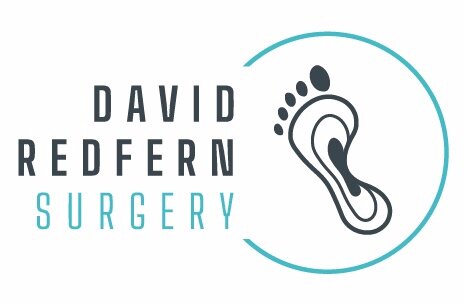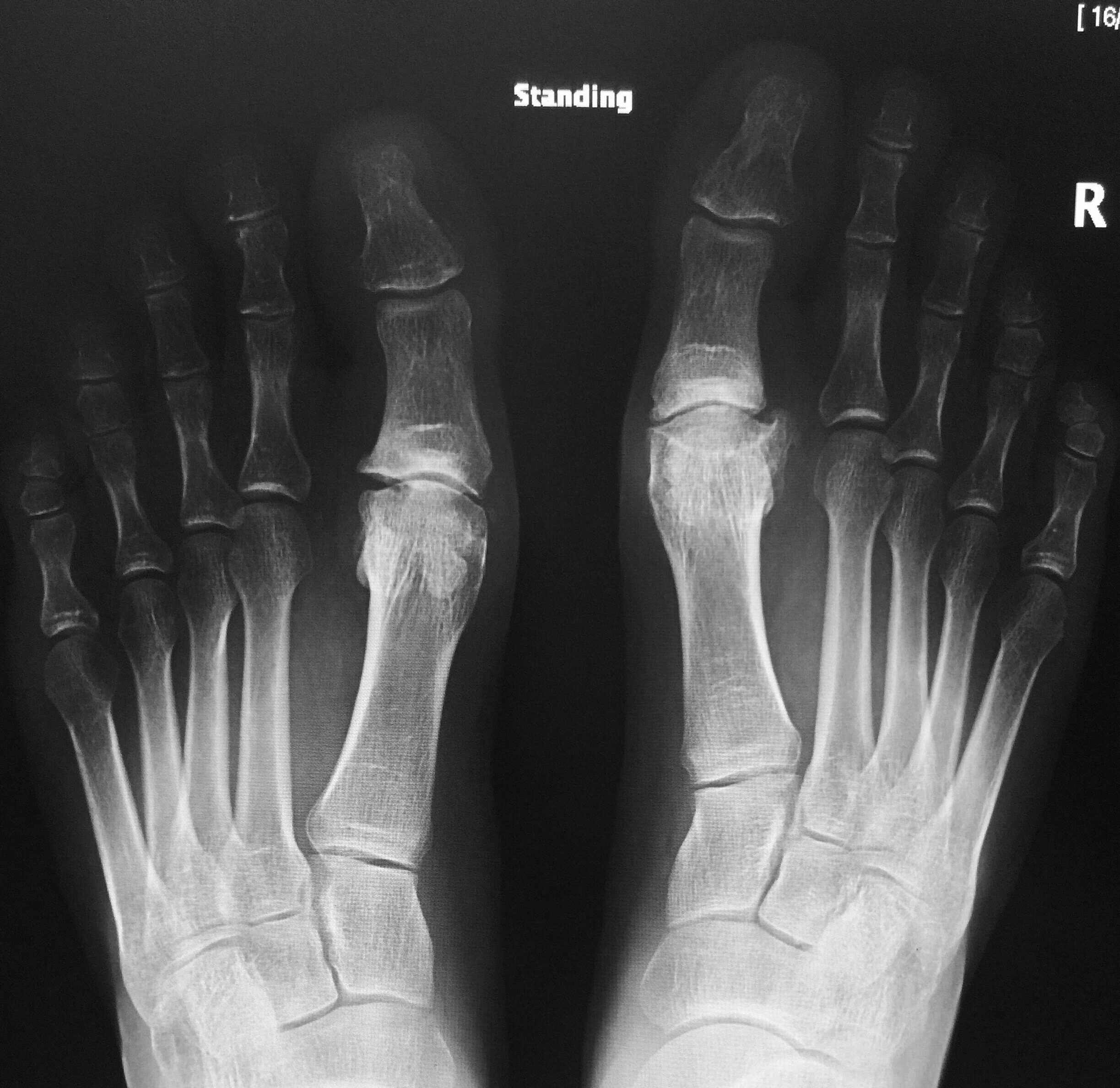BIG TOE ARTHRITIS
Hallux Rigidus
Big Toe Arthritis
Arthritis of the big toe joint is a process which results in damage to the normally smooth articulating surfaces of the big toe joint. The medical term for this condition is ‘hallux rigidus’ which quite literally means stiff big toe. The condition can cause pain, stiffness and often swelling of the big toe joint (hallux metatarsophalangeal joint).
Hallux rigidus
Hallux rigidus is the medical term for arthritis of the joint at the base of the big toe. Arthritis of this joint is strongly inherited and usually affects both feet although not necessarily to the same extent. In these X-rays you can see the big toe joint looks disorganised compared to the other joints with spurs around the edges of the joint and a narrowed space between the two sides of the joint due to loss of cartilage in the joint.
The Arthritis damages the highly specialized cartilage which lines the end of bones allowing smooth joint movement. Arthritis can occur in any of the joints of the foot and ankle but is most common in the big toe joint. It is very often an inherited condition and can begin to cause problems in relatively early adult life.
Pain and Stiffness in the big toe
Patients usually often report noticing pain and stiffness with activities such as longer walks or running. Often the joint is more painful after the activity. Certain types of footwear can also provoke pain in this condition, especially men’s formal shoes and ladies’ high heels.
Symptoms
Patients usually present with pain and stiffness in the big toe joint (hallux metatarsophalangeal joint). They have also often noticed that the joint has become larger with a bony bump on top. This bump is sometimes called a ‘dorsal bunion’ which is a confusing term as it is not a true bunion but a bump caused by the underlying arthritis.
Assessment
Mr Redfern sees a lot of patients with this condition and will assess your symptoms carefully. He will examine your foot and obtain weight bearing X-rays to establish the extent of the arthritis. He will then talk to you about the different treatment options.
Hallux rigidus
Treatment options
Non-operative Treatment:
Analgesics
Stiff-soled footwear
Orthotics (insoles stiffened in the area under the hallux metatarsophalangeal joint)
Steroid (or Ostenil) injection can also provide some temporary relief
If the above non-operative treatments are not sufficient to manage the symptoms then surgical treatments may be discussed with you.
Operative Treatment:
Determined by the extent of the arthritis in the big toe joint (metatarsophalangeal joint)
Minimally invasive cheilectomy
Keyhole surgery to remove painful spurs on top of the joint
Minimally invasive hallux rigidus oblique osteotomy (MIRO)
An operation designed to decompress the arthritic joint
Cartiva implant
An implant that works as a spacer which can reduce pain whilst maintaining movement
Silastic implant
An implant that works that replaces the joint with a silicone hinge which again, can reduce pain whilst maintaining movement.
Stiffening of the arthritic big toe joint (Hallux metatarsophalangeal joint fusion)




